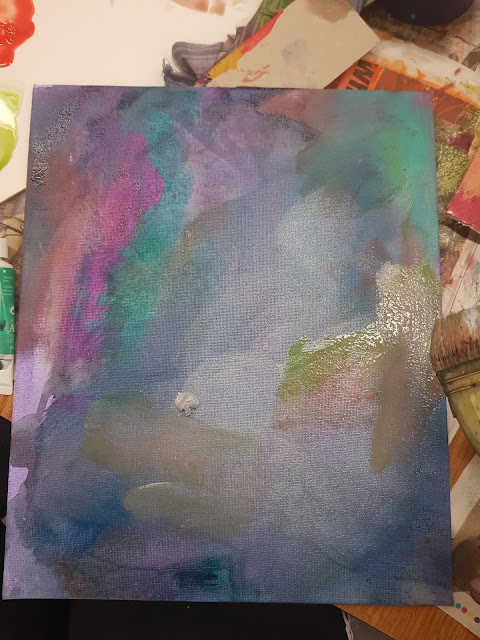Skills Week: Abstraction
Week 5 was a tutorial week for us to learn different skills which will be needed in our subject areas. While Abstraction was not a requirement, I have decided to join as it was needed for my major project and may be needed in future works as well. We were taught on using different materials other than brushes to create abstract patterns including straws, sponges and cloths, and to work in textured surfaces.
Surfacing job with sand+gesso and foil+gesso
Before we worked on anything, we surfaced the canvas boards with sand and wrinkled foil for them to dry while discussing abstraction techniques. Giving difference to the surface that will be worked on can give unique patterns and textures which works well with abstraction.
Another surfacing job with acrylic wash
We surfaced another canvas board with an acrylic wash and cloth; we placed a layer of watered-down paint using one side of the cloth and wiped it off with another dry side. In my case, I have watered down the paint too much, making it seem like watercolour. However I think it has created some interesting spots I could work with. This was again left to dry.

Abstraction techniques
We then went onto practising some abstraction techniques on spare sheets of paper. Among the materials used were a piece of board (for scraping), sponge, straw (for blowing) and toothbrush which create a spray-like look.
Abstraction work using warm colours
After learning about the different techniques of abstraction, we went on to create our own works using the textured canvas board. In this case I have used the board with sawdust and gesso, and I preferred this texture over the other boards made due to the roughness of the sand which creates patterns that I find interesting. During its creation, I was imagining a scene of forest fire or car accident and I feel like I have captured the atmosphere quite well. One point I have noticed in its creation is that sponges, which is the main material I used for this, works incredibly well with the texture of sand. However I would have to take note of using focal points in my works better since the focal point of this work is weak.
Abstraction work using cool colours
We had created a second abstraction, to which I chose the colour washed board with cool colours. I attempted to use the blowing technique as a main technique for this, however my lung capacity has failed me so I ended up using brushes and toothbrush. I think I have given a better focal point in this work with the dominant white swirls located slightly off-centre.
Overall, the techniques I have learnt in this workshop will help me in my final project as I believe that it is the optimal technique in capturing the topic of my subject (Buddhism and Earthly Delights) and is especially related to my future artist research of Penny Siopis. I would still have to practise on giving good focal points as it is important in overall composition of the illustration and magazine composition as well.









Good post, with some interesting reflection on how you might use this in the project. Scanning surfaces such as these and using them as digital backgrounds for your work would be a good combination of materials and skills.
ReplyDelete